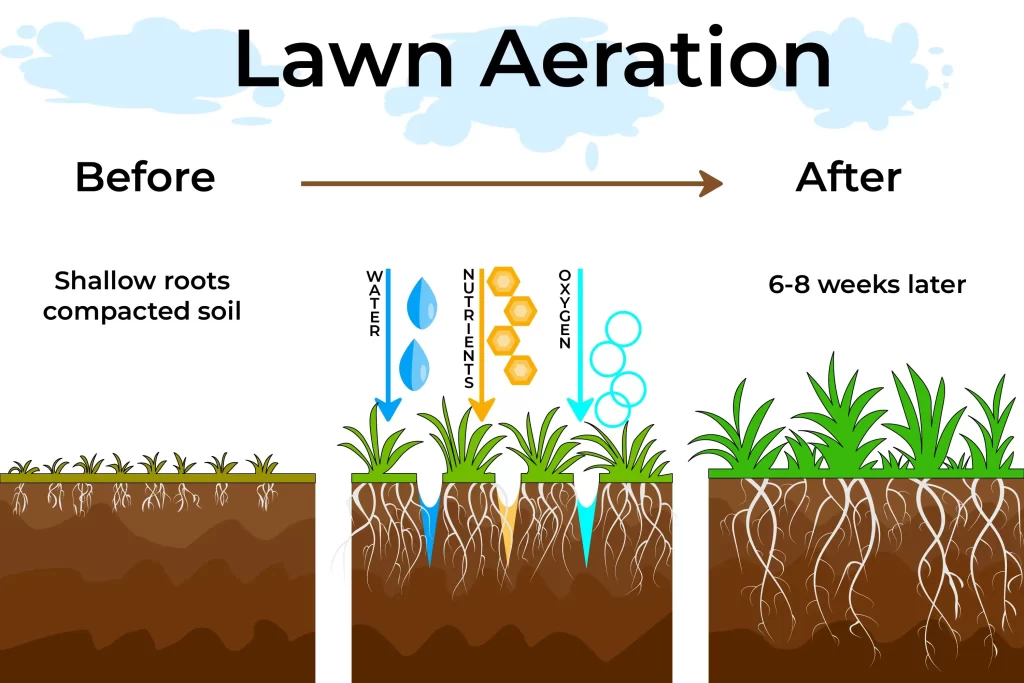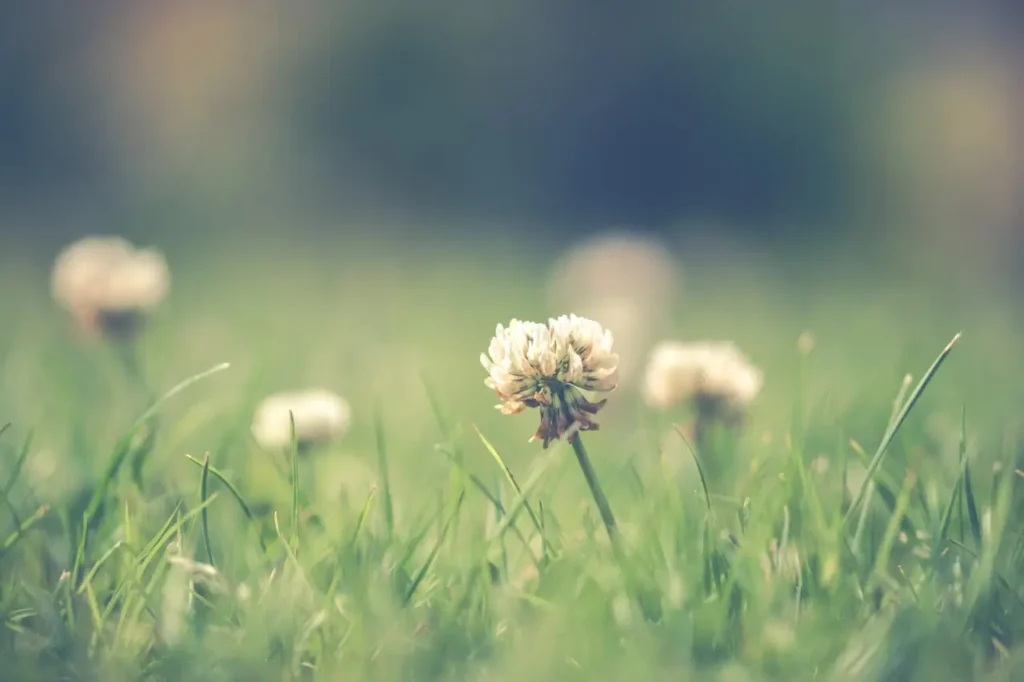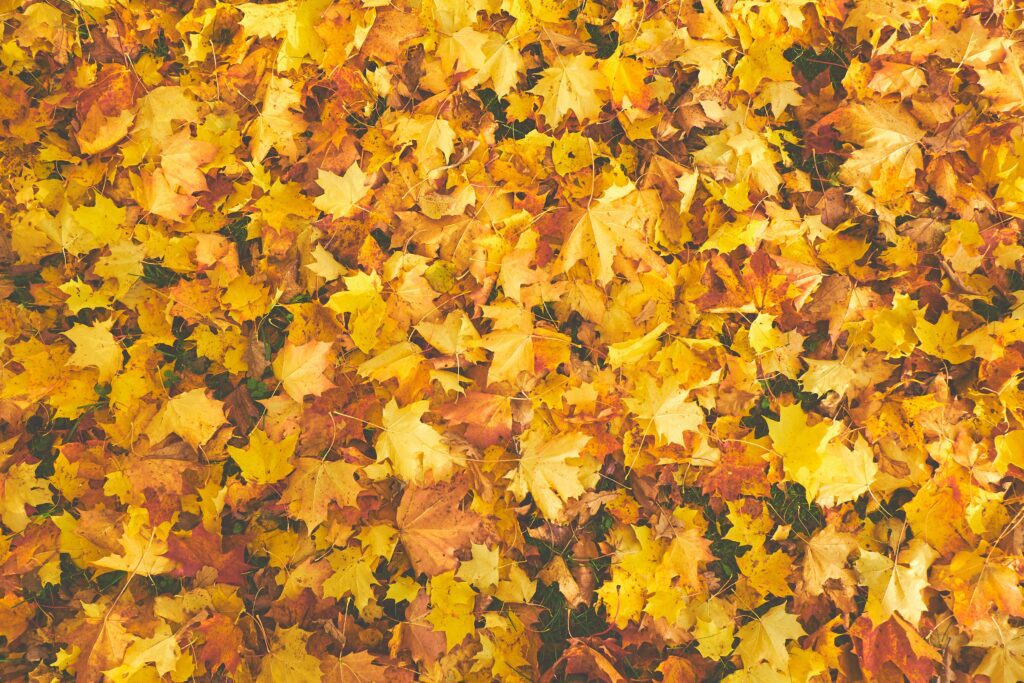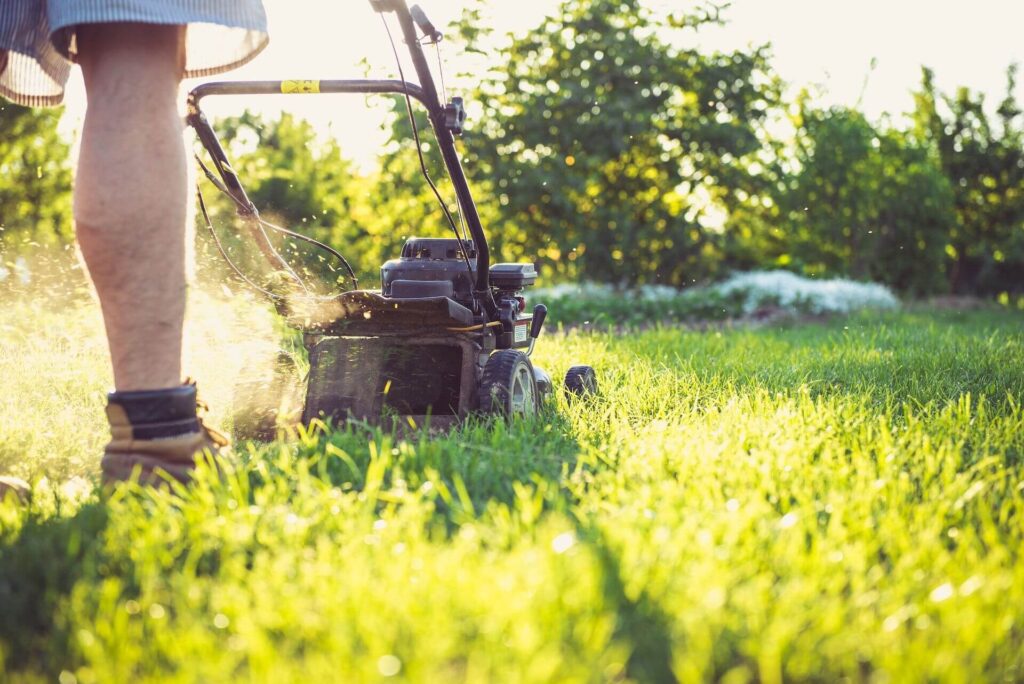Lawn aeration is one of the most highly recommended grass services for a greener and thicker lawn. However, in Colorado, the weather changes every other day; as a result, determining the best time to aerate your grass can be difficult. Therefore, it is suggested that you should aerate your lawn during the cooler months, which is why we’ll look at the benefits of lawn aeration in the spring!
What is Lawn aeration?
If you love gardening or have a lawn, you may have heard of lawn aeration, even if you have no idea what it is. So, what is lawn aeration exactly? Just like humans require oxygen for survival, the lawn and soil need to breathe.
Aeration is all about making holes in the ground to provide oxygen to your soil. It means you’re poking holes to help the roots access important components like air and water. This method encourages the roots to grow deeper, resulting in stronger and more vibrant grass.

Why is it important to aerate your lawn?
Basic lawn care procedures such as appropriate mowing, watering, fertilizing, and aeration should be followed if you want to attain a beautiful lawn. But now the question arises why aerate lawn? So, here is why!
- Aeration removes soil compaction
When soil is compacted, nutrients, air, and water fail in reaching the soil. This condition could result in grass thinning, dead sports, or patches. So, what does lawn aeration do in this situation?
During aeration, tiny cores and plugs are pulled up in the lawn; this helps soften the soil so that both water and air can easily reach the soil. - Aeration improves availability of nutrients
Lawn aeration provides important nutrients by penetrating deep into the soil to boost its ability to absorb nutrients more effectively, resulting in healthier grass. It also provides a space for plant roots to spread and expand, allowing them to grow. - Aeration helps remove lawn thatch
Thatch occurs when a layer of dead plant material builds up on your grass, surrounding its base. If thatch isn’t removed in spring it may become excessive, in turn depriving the roots of oxygen and essential nutrients.
Best time to aerate the lawn
Spring and fall both are the best seasons for lawn aeration. Both seasons have their own merits, the greening process is accelerated in springtime, while the underground root system is strengthened in the fall.
Benefits of lawn aeration in the spring
Spring season is preferred for lawn aeration because there are several benefits of lawn aeration in the spring. Here are a few of the advantages as to why:
- Prepares the lawn
Aeration is best done in the spring since it helps you prepare your lawn for the warmer weather, and it ensures that new seeds germinate successfully. During the winter, the lawn grows a thatch, so when you aerate your lawn in spring, it becomes ready for summer. - Beneficial for clay soil
Clay soils are deficient in oxygen, and hence aeration helps to reintroduce oxygen to the grassroots. Aerating this kid of soil is crucial because it helps to keep the clay soil from being overly compacted, diminishing grass thickness. - Allows soil to heal
Aerating your grass in the spring allows it to recover and fill in the spaces left after the removal of soil plugs.
How to Tell if Your Lawn Needs Aeration
Many owners struggle with this question but all you have to do is look for some telltale signs.
- Your Lawn Has Thin or Sparse Spots
There are many reasons why grass might be thinning, but a common reason is due to soil compaction. Thinning or bald patches are indicators that their roots are unable to get the proper nutrients or absorb water. - Your Lawn Has Discolored Areas
Yellow and brown grass is another warning sign that your lawn needs aeration. Discoloration is a sign your lawn isn’t getting enough water. And bad water absorption is another sign of compacted soil compaction is one of several reasons for discoloration in your yard. - Your Lawn Stopped Growing
Have you noticed your grass just doesn’t look like it’s doing anything? The fewer nutrients the roots receive means the less growth you’ll see. Your lawn is likely suffering from compacted soil and is in need of aeration and seeding. - Your Lawn Has a Thick Layer Thatch
If thatch becomes too thick (greater than ½ inch), then it can be detrimental to your lawn’s health. Aeration helps to decompose thatch at a faster rate. - Your Lawn Failed the Screwdriver Test
Using a 6” or larger screwdriver, or even a pencil, you can test to see how compacted the soil is. Stick the screwdriver into the ground, if you experience difficulty then your soil may be compacted and dehydrated.
With wishy-washing springs in Colorado, aerating your lawn in the spring is essential to creating a healthy lawn year-round. To schedule your next aeration, please contact us.
Other Great Articles about Lawn Care Trips

Understanding How Pre-Emergent & Post-Emergent Weed Control Products Work
Weeds can be the bane of any homeowner’s lawn, especially in central Colorado. If you’re battling these pesky intruders, understanding the differences between the various weed control products available can be daunting. That’s why we’re going to explain the two main types of weed management products, pre-emergent and post-emergent herbicides. As you read on, you’ll…

The Complete Guide to Fall Lawn Care: Best Practices for Preparing Your Lawn for Winter
Is this your first fall as a Colorado Springs homeowner? Whether you’re ready to winterize your lawn for the first time or simply need a fall lawn care refresher for the home you’ve lived in for years, these essential lawn care basics will help you transition your lawn from the summer season to winter. Fall…

The Complete Guide to Lawn Mowing + Lawn Mowing Tips for Colorado Springs Homeowners
Mowing your Colorado Springs lawn is more than a weekend chore; it’s essential to keeping your green space healthy and attractive. You may think the only purpose of mowing is to keep your grass from getting unruly. However, your mowing practice can actually help increase your lawn’s density and encourage deep root growth, two factors…
